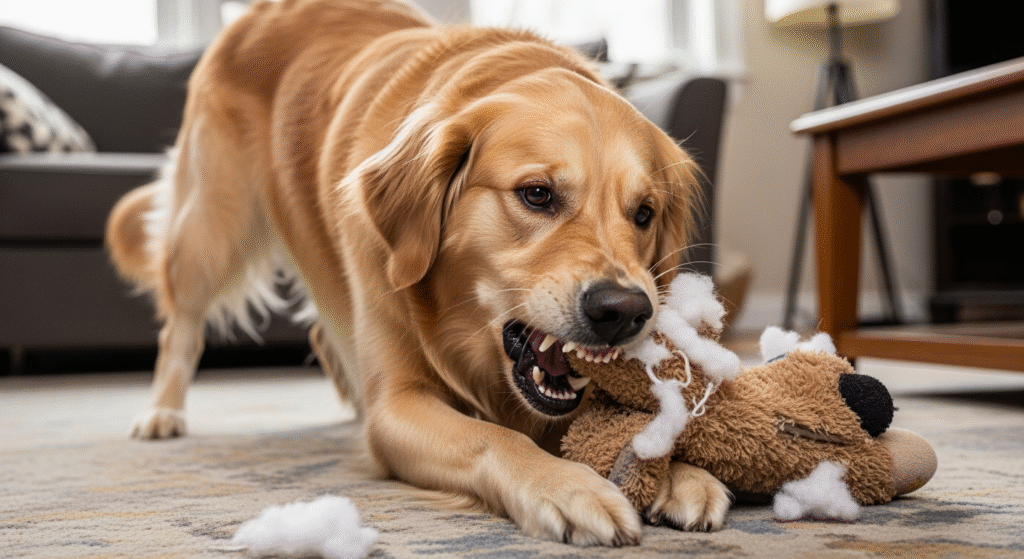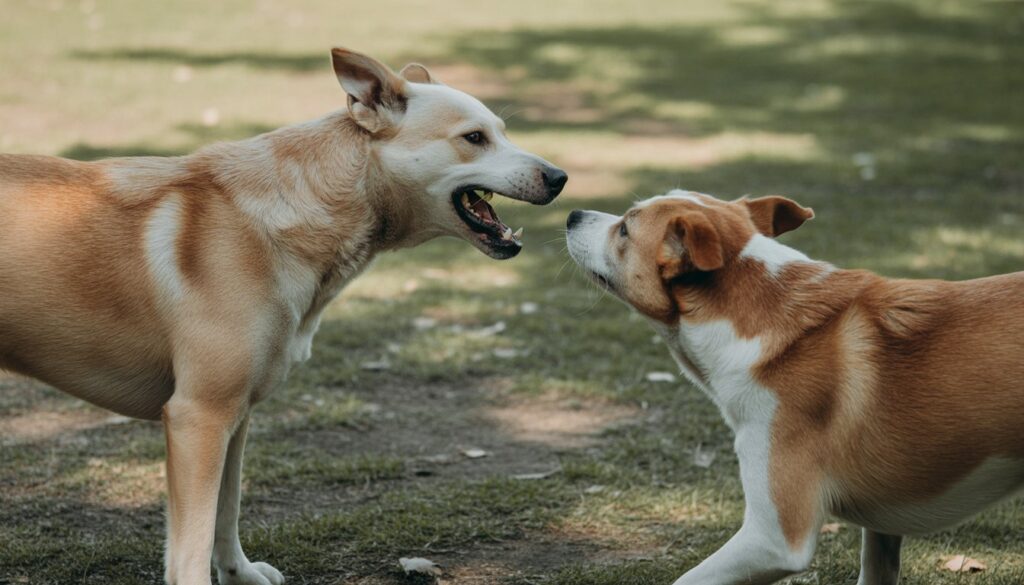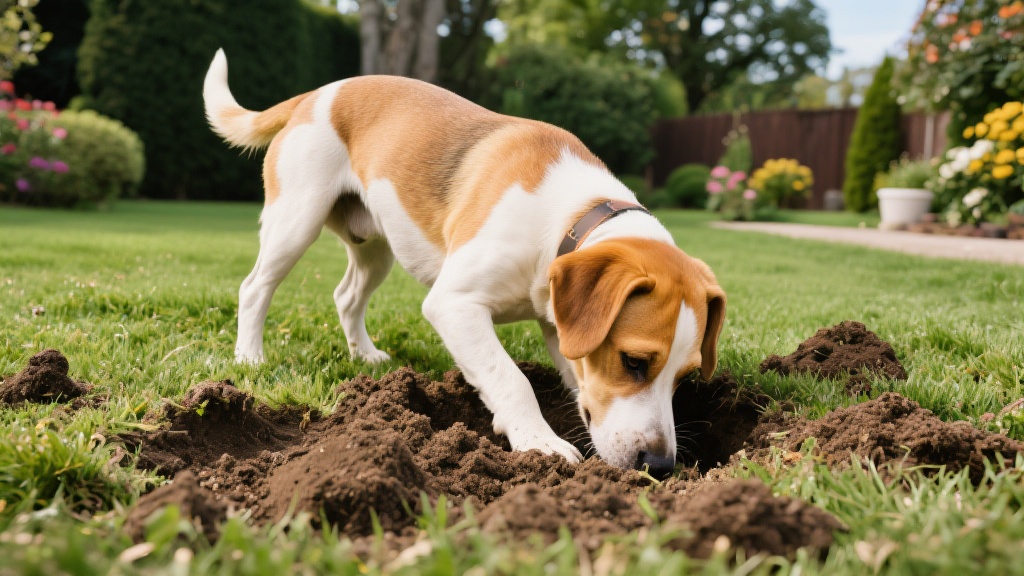Your adorable pup just chewed up your favorite shoes, barked at the mailman for the tenth time today, and somehow managed to steal food right off your dinner plate. Sound familiar? Don’t worry – you’re not alone in this chaos!
The good news? Most dog behavior problems have surprisingly simple solutions that don’t require expensive training classes or months of frustration.
1. Excessive Barking That Drives Everyone Crazy
Excessive barking ranks as the number one complaint I hear from dog parents across America. Your dog barks at everything – doorbell, squirrels, other dogs, sometimes even at absolutely nothing.
The quick fix starts with identifying the trigger. Is your dog bored, anxious, or just protecting their territory?
For attention-seeking barkers, ignore them completely when they bark and reward quiet behavior with treats. For boredom barking, increase daily exercise and provide puzzle toys.
If your dog barks at outside noises, move them away from windows or use white noise to mask triggers. The “quiet” command works wonders too – say it once, wait for silence, then reward immediately.
2. Destructive Chewing Behavior

Nothing breaks your heart quite like coming home to find your couch destroyed or important documents shredded. Destructive chewing usually stems from boredom, anxiety, or natural puppy behavior.
First, puppy-proof your space by removing tempting items. Provide appropriate chew toys – rotate them weekly to maintain interest.
When you catch your dog chewing something inappropriate, redirect them to their designated toy immediately. Never punish after the fact since dogs don’t connect delayed consequences with their actions.
For separation anxiety chewing, start with short departures and gradually increase time away. Leave special toys that only come out when you’re gone. Exercise your dog thoroughly before leaving – a tired dog is less likely to be destructive.
3. Jumping on People and Guests
Your 70-pound Golden Retriever thinks everyone wants a enthusiastic greeting that involves muddy paws on clean clothes. Jumping behavior embarrasses you and potentially scares visitors, especially children.
The solution requires consistency from everyone your dog meets. When your dog jumps, immediately turn away and ignore them completely. No eye contact, no talking, no pushing away – these all count as attention.
Only give attention when all four paws stay on the ground. Ask visitors to follow the same protocol.
Practice the “sit” command before greetings. Keep treats by your door and reward calm behavior instantly. If your dog knows visitors trigger excitement, have them sit and stay before opening the door. This takes about two weeks of consistent practice to see real results.
4. Pulling on the Leash During Walks
Walking your dog shouldn’t feel like you’re water skiing behind a furry speedboat. Leash pulling makes walks stressful and can cause injury to both you and your pet.
Stop moving forward the instant your dog pulls. Stand still like a tree until the leash loosens, then continue walking. This teaches your dog that pulling gets them nowhere – literally.
Use the “be a tree” method consistently. Reward your dog with treats and praise when they walk beside you with a loose leash.
Consider a front-clip harness which redirects your dog toward you when they pull, rather than giving them more leverage like back-clip harnesses do. Practice in your yard first, then graduate to quiet streets before tackling busy areas with lots of distractions.
5. Food Aggression and Resource Guarding
Resource guarding happens when dogs become possessive over food, toys, or even sleeping spots. This behavior can escalate quickly and become dangerous, especially around children.
Never punish or forcefully take items away – this often makes guarding worse. Instead, teach your dog that human hands near their food means good things happen.
Start by dropping high-value treats into their food bowl while they eat. Gradually work up to briefly touching the bowl, then picking it up for a second before returning it with something extra special inside.
For toy guarding, teach the “drop it” command using positive reinforcement. Offer a trade – give them something even better in exchange for the guarded item. Practice this regularly during calm moments, not just when problems arise.
6. Inappropriate Elimination Indoors
House training accidents frustrate even the most patient dog parents. Whether you’re dealing with a puppy or an adult dog, indoor elimination usually indicates incomplete house training, medical issues, or anxiety.
First, rule out medical problems with your vet. UTIs, digestive issues, and other health concerns can cause accidents.
For house training, take your dog outside every 2-3 hours, immediately after meals, and first thing in the morning. Praise and treat outdoor elimination enthusiastically.
Clean indoor accidents with enzymatic cleaners that eliminate odor completely – regular cleaners leave scents that attract repeat offenses. Never punish accidents; just clean up and stick to your schedule.
7. Separation Anxiety and Destructive Behavior
Separation anxiety affects millions of American dogs and creates a heartbreaking cycle – your dog panics when you leave, destroys things, then you come home upset, which increases their anxiety about your departures.
Start with very short departures – even just 5 minutes. Gradually increase time away as your dog learns you always return.
Make departures boring. Don’t make a big fuss when leaving or returning. Keep your keys, shoes, and other departure cues neutral by handling them randomly throughout the day.
Create positive associations with alone time using puzzle toys or special treats that only appear when you leave. Exercise your dog well before departures.
8. Aggressive Behavior Toward Other Dogs

Dog aggression ranges from mild reactivity to serious fighting behavior. This problem often develops from lack of socialization, fear, or previous negative experiences with other dogs.
Identify your dog’s trigger distance – how close other dogs can get before your dog reacts. Work just outside this zone using counter-conditioning techniques.
When you see another dog at a distance, immediately give your dog high-value treats and praise. You’re teaching them that other dogs predict good things happening.
Gradually decrease distance as your dog’s comfort level improves. Never force interactions or punish reactive behavior – this often makes aggression worse.
9. Begging at the Table During Meals
Food begging turns family dinners into guilt-ridden affairs with those irresistible puppy dog eyes staring at every bite you take. This behavior exists because it works – someone always gives in eventually.
The solution requires family-wide consistency. Never feed your dog from the table or while you’re eating – not even once.
Teach your dog to go to their bed or designated spot during meal times. Start practicing this during non-meal times when it’s easier to focus on training.
Feed your dog their meal at the same time you eat yours. A busy dog can’t beg effectively. You can also provide a puzzle toy or long-lasting chew during your dinner time.
10. Digging Up Your Beautiful Yard

Destructive digging transforms your landscaping dreams into a moonscape nightmare. Dogs dig for various reasons – boredom, hunting instincts, temperature regulation, or just because it’s fun.
Provide a designated digging area in your yard. Choose a corner spot and encourage digging there by burying toys or treats. When you catch your dog digging elsewhere, redirect them to their special spot.
Increase physical exercise and mental stimulation. A tired dog is less likely to redecorate your garden. Puzzle toys, training sessions, and longer walks help burn excess energy constructively.
Cover problem areas with chicken wire or rocks temporarily while you redirect the behavior. Make the forbidden areas less appealing while making the approved digging zone irresistible.
11. Not Coming When Called (Poor Recall)
Poor recall isn’t just frustrating – it’s potentially dangerous. When your dog ignores your calls, they could run into traffic, approach aggressive dogs, or get lost.
Never call your dog to come for something they perceive as negative. Don’t call them to end fun activities, give baths, or leave the dog park. Instead, go get them.
Practice recall in low-distraction environments first. Start in your house, then your yard, then gradually add distractions. Always use a long training leash in unfenced areas while building reliability.
The “come” command should predict awesome things happening. If you’ve poisoned the cue by using it negatively, choose a new word and start fresh with positive associations only.



